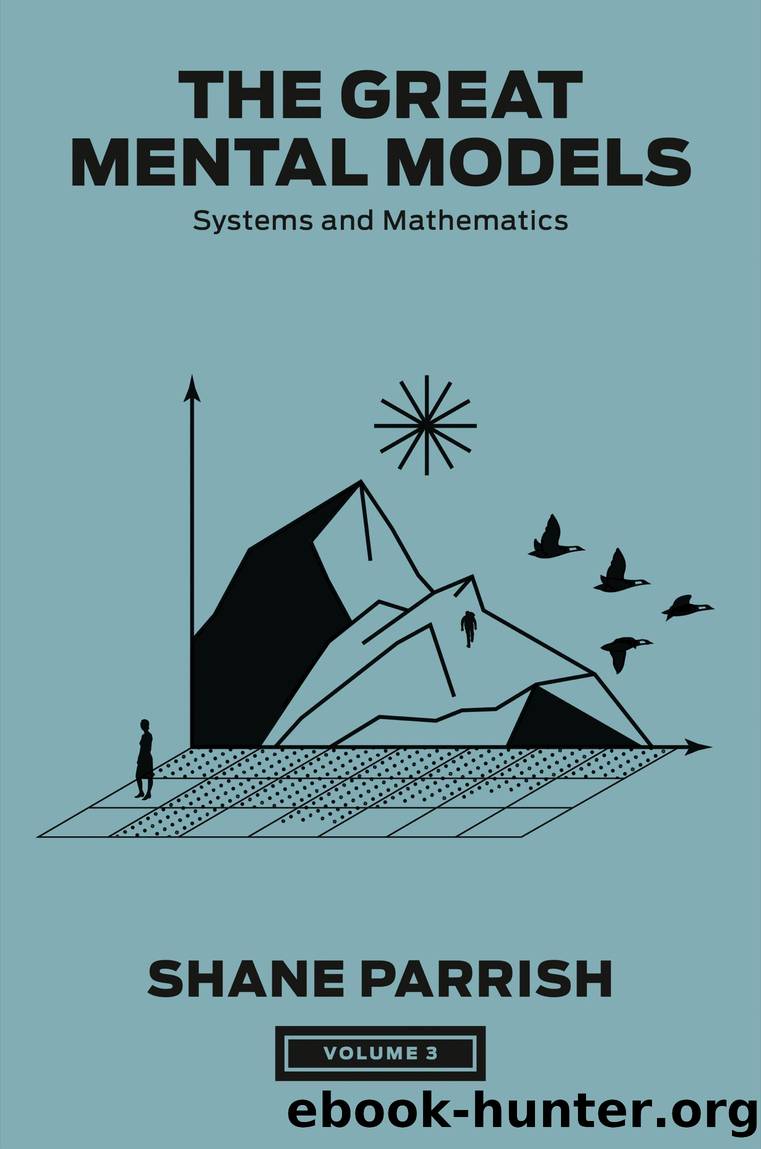The Great Mental Models, Volume 3 by unknow

Author:unknow
Language: eng
Format: epub
Publisher: Penguin Publishing Group
Published: 2024-10-15T00:00:00+00:00
To look at the history of exploitation films during this era is to see a repeated pattern of audiences responding strongly to one film, then directors and studios hastily copying its distinguishing featuresâon and on until the impact was lost. Audiences couldnât be as surprised the tenth time they saw a possessed child or a group of campers being picked off one by one. They needed to see more deaths, more graphic gore, more taboo subjects, more nudity. Everything had to turn up a notch each time or diminishing returns set in.
Sometimes titles were copied. The 1962 film What Ever Happened to Baby Jane?, an acclaimed Academy Award winner, was eventually followed by What Ever Happened to Aunt Alice? (1969), Whatâs the Matter with Helen? (1971), and Who Slew Auntie Roo? (1971). Similarly, we have Donât Look in the Basement (1973), Donât Open the Window (1976), Donât Go in the House (1979), and Donât Answer the Phone! (1980). When making a new film with a copycat title was too much of a stretch, production companies were not averse to rereleasing an old one with a new name and poster. Any successful exploitation film would see its basic premise replicated ad nauseam until the effect wore off.[27]
Advertising materials were fair game too. After Color Me Blood Red (1965) used the tagline âYou must keep reminding yourself itâs just a movie, itâs just a movie, itâs just a movie,â similar sentiments followed for films lacking the clout to warrant it. The Last House on the Left (1972) advised viewers, âTo avoid fainting keep repeating, itâs only a movieâ¦only a movieâ¦only a movieâ¦â Hallmark then reused essentially the same marketing for Donât Look in the Basement (1973) and The Horrible House on the Hill (1974).[28] Makers of exploitation films had to keep coming up with new ideas to get a response. Any part of a film that got a reaction was fair game for copying, which deadened future responses and made viewers more skeptical of marketing materials. A clever new title structure might be a surprise to audiences at first, but copies wore them out.
Despite occasional later freak successes for low-budget, shocking films like The Blair Witch Project (1999), exploitation films as they existed from the 1950s to the 1970s are largely dead.[29] As we mentioned before, their key characteristic was covering content mainstream cinema couldnât or wouldnât touch. But times have changed. Viewers are no longer easily shocked. Fringe themes have been absorbed into the mainstream. Ric Meyers writes, âThe major movie studios, who once spit on the very idea of making money off sex and slaughter, now bank on it.â It takes much higher budgets to interest audiences, and with less censorship, mainstream films have become less tame and audiences more desensitized.[30]
Meyers explains, âExploitation films were the price we pay for, essentially, living a lie. Once upon a time, many would like others to think that they were well-adjusted, considerate, intelligent people who would never enjoyâeven revel inâthe suffering of others.â
Download
This site does not store any files on its server. We only index and link to content provided by other sites. Please contact the content providers to delete copyright contents if any and email us, we'll remove relevant links or contents immediately.
Hit Refresh by Satya Nadella(9038)
The Compound Effect by Darren Hardy(8808)
Change Your Questions, Change Your Life by Marilee Adams(7634)
Nudge - Improving Decisions about Health, Wealth, and Happiness by Thaler Sunstein(7615)
The Black Swan by Nassim Nicholas Taleb(7010)
Deep Work by Cal Newport(6877)
Daring Greatly by Brene Brown(6444)
Rich Dad Poor Dad by Robert T. Kiyosaki(6399)
Principles: Life and Work by Ray Dalio(6206)
Man-made Catastrophes and Risk Information Concealment by Dmitry Chernov & Didier Sornette(5921)
Playing to Win_ How Strategy Really Works by A.G. Lafley & Roger L. Martin(5914)
Digital Minimalism by Cal Newport;(5662)
Big Magic: Creative Living Beyond Fear by Elizabeth Gilbert(5610)
The Myth of the Strong Leader by Archie Brown(5424)
The Slight Edge by Jeff Olson(5346)
Discipline Equals Freedom by Jocko Willink(5283)
The Motivation Myth by Jeff Haden(5155)
Stone's Rules by Roger Stone(5026)
The Laws of Human Nature by Robert Greene(4996)
